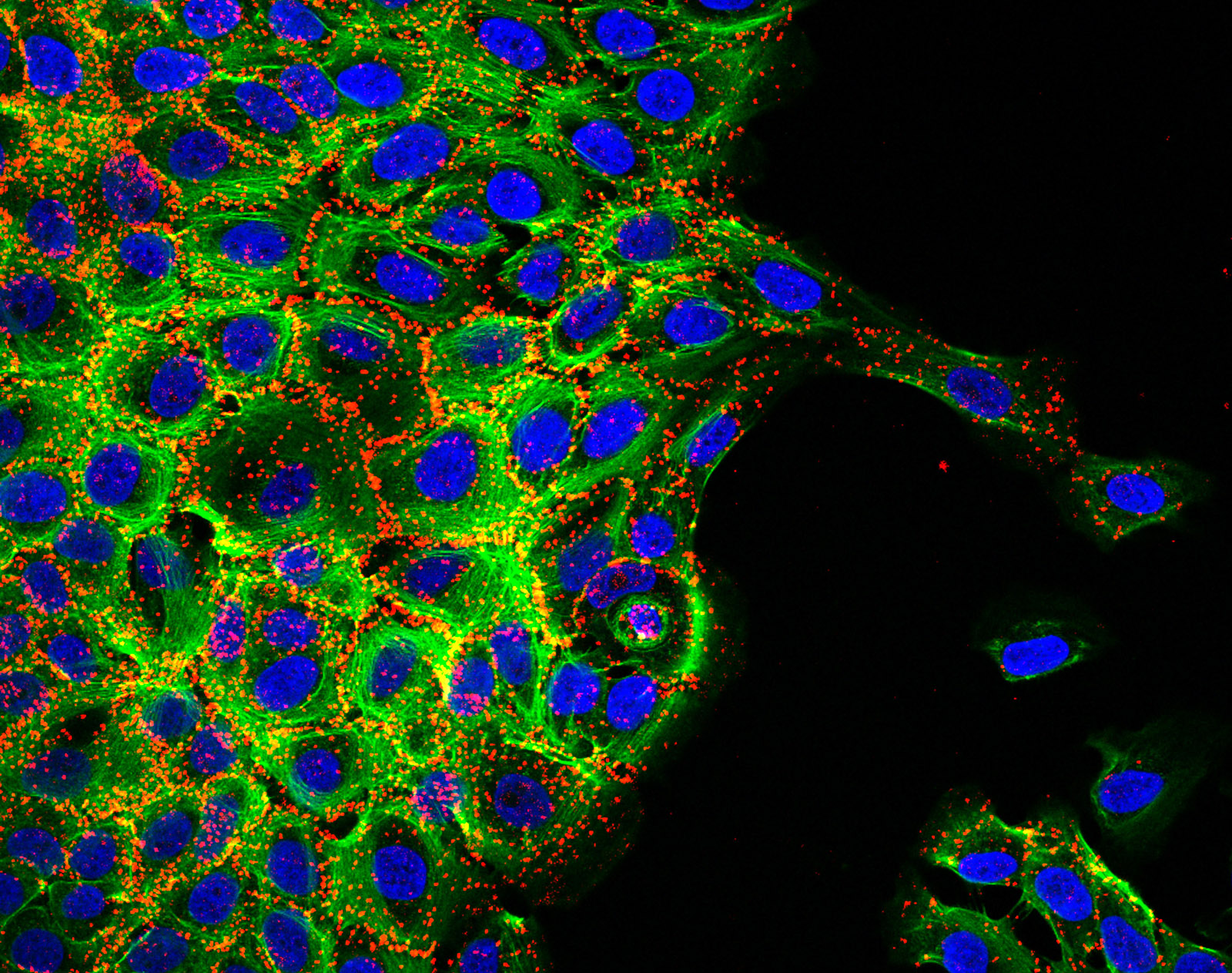Cytoskeletal Regulation & Cancer
ABOUT
Our main objective is to shed light on how the organisation, dynamics and mechanical properties of the cytoskeleton spatially coordinate the whole interconnected cancer signalling network to drive emergent cellular responses.
RESEARCH
Cancer evolution is a long-lasting process that involves multiple steps, going from benign conditions to pre-malignant lesions, until these harmless conditions are converted into aggressive malignancies by additional events. Not all pre-cancerous lesions will actually evolve to aggressive cancer. Those that will not may never become clinically relevant. Yet, the actual risk that a pre-cancerous condition will progress to an overt malignancy remains unknown. Those that progress will acquire invading and metastatic potential. These processes, in addition to intrinsic or acquired cytotoxic drug resistance, are responsible for the majority of death in cancer patients. This is particularly true for triple-negative breast cancer (TNBC), which remains the most lethal subtype of breast cancer. Still, the underlying mechanisms remain poorly understood.
Cancer initiation and progression depends on cell-autonomous signalling pathways. These pathways are known to affect the cytoskeleton in order to best adapt cell geometry and mechanics to particular cancer cell behaviours. However, this regulatory link is not unidirectional. Our team contributed to unveil mechanisms by which the cytoskeleton governs the location, duration, and intensity of cancer signalling pathways activation through diverse mechanisms, ranging from force generation to the spatial distribution of signalling regulators [2017 Nat. Comm.; 2019-Sci. Rep.; 2023-DMM]. Altogether, our observations suggest that global and/or local changes in the organization, dynamics and mechanical properties of the cytoskeleton affect many signalling molecules simultaneously within the whole interconnected signalling network. With the ultimate goal to define the downstream cytoskeleton-dependent cancer signalling network, we turned to computational modelling of large biological networks, which capture the complexity of signalling crosstalk and feedbacks and can generate powerful hypotheses [2020 Can. Res.; 2021-IJMS].
Building up on our findings, we are currently using multi-disciplinary approaches, combining experimental models (Drosophila melanogaster, inducible mammalian epithelial cell models, TNBC patient-derived organoids) and computational modelling to answer four specific questions: How cell shape, a direct readout of intrinsic forces exerted by the cytoskeleton on the cell membrane, constrains the signalling network to predispose for or to hamper tumour initiation? How cytoskeleton-adhesions scaffolds orchestrate the signalling network instructing benign lesions to progress to malignant cancer cells? How the cytoskeleton and forces by the extracellular matrix propel TNBC cell invasion? How cytoskeleton-adhesions scaffolds supervise chemoresistant signalling networks in TNBC?
We expect to shed light into the rationale behind cancer signalling network. This knowledge should guide our awareness on mechanisms by which the transcriptional programme is supervised by cell architecture to control cell fate decision during normal and disease development. Importantly, it may ultimately translate into tools that are relevant for the therapeutic intervention of cancer.

Team
Selected Publications
Activation of an actin signaling pathway in pre-malignant mammary epithelial cells by P-cadherin is essential for transformation. DMM Disease Models and Mechanisms16(2):, 2023. [Journal: Article] [CI: 7] [IF: 4]
DOI: 10.1242/dmm.049652 SCOPUS: 85150628415
Oliveira A.C., Santos M., Pinho M., Lopes C.S.
String/Cdc25 phosphatase is a suppressor of Tau-associated neurodegeneration. DMM Disease Models and Mechanisms16(1):, 2023. [Journal: Article] [CI: 1] [IF: 4]
DOI: 10.1242/dmm.049693 SCOPUS: 85147045472
Sluimer L.M., Bullock E., Rätze M.A.K., Enserink L., Overbeeke C., Hornsveld M., Brunton V.G., Derksen P.W.B., Tavares S.
SKOR1 mediates FER kinase-dependent invasive growth of breast cancer cells. Journal of Cell Science136(3):, 2023. [Journal: Article] [CI: 6] [IF: 3.3]
DOI: 10.1242/jcs.260243 SCOPUS: 85147458206
Khalil K., Eon A., Janody F.
Cell Architecture-Dependent Constraints: Critical Safeguards to Carcinogenesis. International Journal of Molecular Sciences23(15):, 2022. [Journal: Review] [CI: 3] [IF: 5,6]
DOI: 10.3390/ijms23158622 SCOPUS: 85136340509
Selvaggio G., Chaouiya C., Janody F.
In silico logical modelling to uncover cooperative interactions in cancer. International Journal of Molecular Sciences22(9):, 2021. [Journal: Review] [CI: 4] [IF: 6,2]
DOI: 10.3390/ijms22094897 SCOPUS: 85105132637
Selvaggio G., Canato S., Pawar A., Monteiro P.T., Guerreiro P.S., Manuela Brás M., Janody F., Chaouiya C.
Hybrid epithelial–mesenchymal phenotypes are controlled by microenvironmental factors. Cancer Research80(11):2407-2420, 2020. [Journal: Article] [CI: 41] [IF: 12,7]
DOI: 10.1158/0008-5472.CAN-19-3147 SCOPUS: 85085904168
Jain P.B., Guerreiro P.S., Canato S., Janody F.
The spectraplakin Dystonin antagonizes YAP activity and suppresses tumourigenesis. Scientific Reports9(1):, 2019. [Journal: Article] [CI: 14] [IF: 4]
DOI: 10.1038/s41598-019-56296-z SCOPUS: 85077305562
Tavares S., Vieira A.F., Taubenberger A.V., Araújo M., Martins N.P., Brás-Pereira C., Polónia A., Herbig M., Barreto C., Otto O., Cardoso J., Pereira-Leal J.B., Guck J., Paredes J., Janody F.
Actin stress fiber organization promotes cell stiffening and proliferation of pre-invasive breast cancer cells. Nature Communications8:, 2017. [Journal: Article] [CI: 126] [IF: 12,4]
DOI: 10.1038/ncomms15237 SCOPUS: 85019618841
Brás-Pereira C., Potier D., Jacobs J., Aerts S., Casares F., Janody F.
dachshund Potentiates Hedgehog Signaling during Drosophila Retinogenesis. PLoS Genetics12(7):, 2016. [Journal: Article] [CI: 11] [IF: 6,1]
DOI: 10.1371/journal.pgen.1006204 SCOPUS: 84982854129
Brás-Pereira C., Casares F., Janody F.
The retinal determination gene dachshund restricts cell proliferation by limiting the activity of the Homothorax-Yorkie complex. Development142(8):1470-1479, 2015. [Journal: Article] [CI: 15] [IF: 6,1]
DOI: 10.1242/dev.113340 SCOPUS: 84926380808

